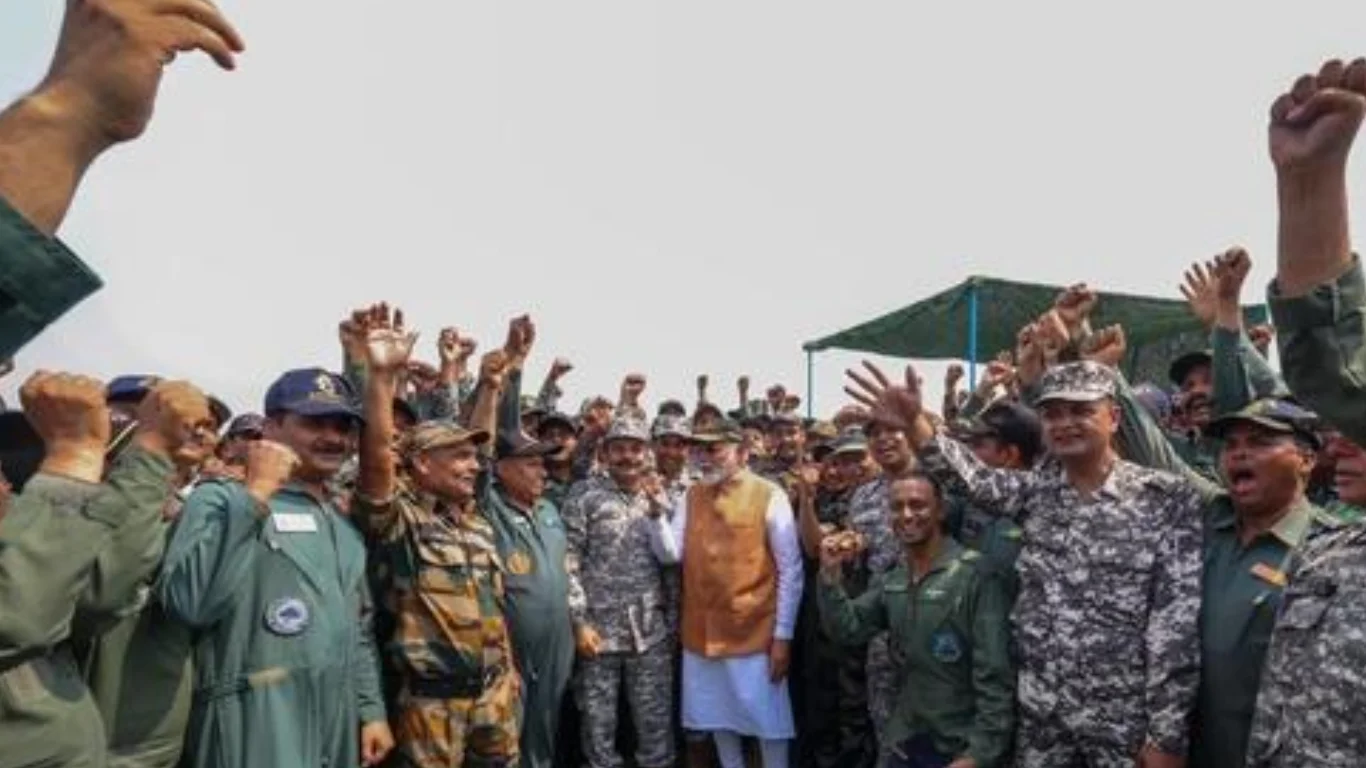
On the early morning of May 13, 2025, Prime Minister Narendra Modi paid a surprise visit to the Adampur Air Force Station in Punjab, located about 25 kilometers from Jalandhar, in a move that carried both symbolic weight and strategic importance. The visit came just days after the launch of Operation Sindoor on May 7, a robust military initiative undertaken by India in retaliation to the April 22 terror attack in Pahalgam, Jammu and Kashmir, which claimed the lives of 26 civilians. During Operation Sindoor, the Indian Air Force executed precision airstrikes targeting terror camps across the border in Pakistan and Pakistan-administered Kashmir.
Modi’s presence at Adampur was more than ceremonial—it was a demonstration of solidarity with the armed forces and a clear signal to both domestic and international observers of India’s resolve to respond decisively to terrorism. Arriving at the base at 6:15 AM, the Prime Minister spent close to 50 minutes interacting directly with air warriors and senior military officials. In a statement shared on social media platform X (formerly Twitter), Modi praised the bravery and professionalism of the Indian Air Force, stating that the nation would remain eternally grateful for the sacrifices and service of its armed forces.
The Adampur Air Base itself holds historical and strategic significance; having played vital roles in the 1965 and 1971 wars with Pakistan, as well as during the 1999 Kargil conflict, it remains one of the country’s most critical military installations. During the recent cross-border hostilities, the base was among those targeted by Pakistani forces, with debris from a projectile discovered in the nearby village of Kanganiwal, causing injuries and property damage. Against this backdrop, PM Modi’s visit served as a rebuttal to Pakistani claims that Adampur had been significantly damaged—his physical presence at a fully operational base effectively debunked those assertions.
Moreover, his interaction with the personnel on the ground boosted morale and reinforced the government’s unwavering support. This visit came less than 12 hours after Modi’s televised address to the nation on May 12, during which he introduced Operation Sindoor as a new chapter in India’s counterterrorism policy—one grounded in swift, targeted responses rather than prolonged diplomatic posturing. Modi reiterated that while India remained open to peace, it would no longer tolerate what he termed as “nuclear blackmail” or the coexistence of dialogue and terror. His presence at Adampur underscored this doctrine in action: assertive, unyielding, and rooted in a firm belief in military readiness.
By engaging with air force commanders, receiving detailed briefings, and encouraging personnel, Modi sent a dual message—reaffirming internal trust in the armed forces while also communicating externally that India remains resolute in defending its sovereignty. Ultimately, the Prime Minister’s visit was more than a symbolic gesture; it was a calculated, multi-dimensional act reflecting gratitude, strategic clarity, and a pointed reminder to adversaries that India stands prepared to act decisively when its national security is under threat.

















